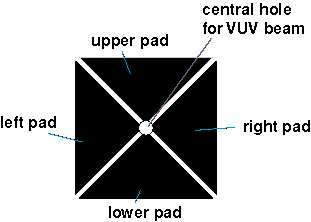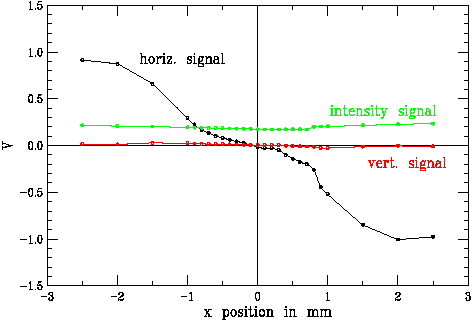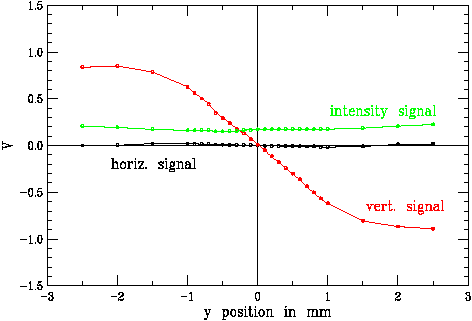 |
|||||||||
|
www.gpta.de |
|||||||||
|
|
|||||||||
|
Characteristics:
Applications:
|
|||||||||
| The principle of operation of our beam position monitors for vacuum ultra violet (VUV) light is the measurement of the photo emission current of a metal surface. The advantage over semiconductor detectors is the wide photon energy range of 20eV to several hundred eV. Our detector head consists of a ultra high vacuum (UHV) compatible Kapton® material with four wedge shaped gold electrodes on it and a hole in the middle to let most of the light pass through as shown in fig. 1. |
|||||||||
 |
|||||||||
|
|
|||||||||
| The position of the beam center is determined by measuring the four different photo currents. The control unit supplies the user with the following three output signals: The difference between the photo currents of the left and right gold pads, called the horizontal signal, the difference between the upper and lower pads, called the vertical signal and the sum of all pads called the intensity signal. These analog signals can either be read out manually using a simple voltmeter or by any sophisticated data acquisition system. |
|||||||||
 |
|||||||||
|
|
|||||||||
 |
|||||||||
|
|
|||||||||
| Figures 2 and 3 show the response of the three signals to a horizontal and a vertical displacement of the photon beam, respectively (photon energy=50eV, flux approximately 10^14 photons/s). A displacement of less than 0.1 mm can be clearly seen in the horizontal or vertical position signal. The sensitivity and response does of course depend on the intensity distribution and the total intensity of the photon beam. Just contact us for more information. |
|||||||||